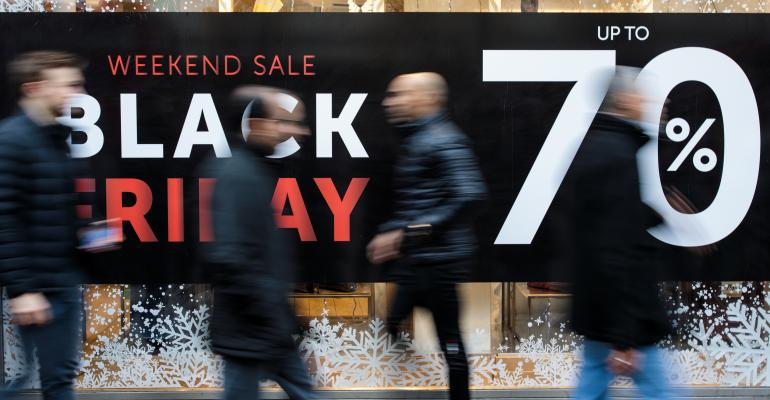By Matthew Boyle and Lindsey Rupp
(Bloomberg)—Black Friday weekend no longer brings a stampede of crazed shoppers to America’s malls. But it still serves as a barometer of retail health as the industry enters the critical holiday season.
The prognosis this year? Shoppers seem willing to spend more, but that’s not benefiting retailers equally. Even with deep discounts, brick-and-mortar stores failed to boost customer traffic on Black Friday. Shopping is increasingly flowing online, with mobile devices becoming the preferred means of commerce.
With the long weekend -- including Cyber Monday -- now in the rearview mirror, retailers are looking to apply lessons to the four weeks remaining in the holiday season. Here are the key takeaways.
Shoppers are opening their wallets
Total holiday spending is expected to climb about 4 percent this year -- in line with 2016’s gain -- but holiday cheer has infected some consumers with a vengeance. Almost a quarter of shoppers spent “much more” over Black Friday weekend.
Older millennials -- a group pegged at age 25 to 34 -- was especially profligate over the weekend. They spent about 25 percent more than the average shopper.
But much of that money is headed online...
E-commerce sales are up about 17 percent this season, according to Adobe Systems Inc. Online merchants racked up a record $6.59 billion on Cyber Monday alone, the company found.
Shopping on phones is rapidly becoming the norm.
The growing number of Amazon Prime memberships shows that the internet giant is tightening its grip on Americans. Women, older shoppers and lower-income consumers have helped fuel gains for the service, which provides free shipping and other perks.
...while brick-and-mortar chains suffer
In terms of getting customers in the door, physical stores had another dismal Black Friday. While some malls had decent traffic, the overall figure was down for a second straight year.
And everyone — online and off — is doling out the discounts
This was supposed to be the year that brands like Ralph Lauren and Michael Kors relied less on markdowns to move merchandise. But so far, the industry appears as discount-dependent as ever.
Almost half of apparel sold online during the holiday season were marked down an average of 46 percent, according to research firm Edited.
On Cyber Monday, merchants also relied more heavily on free-shipping promotions. Shoppers increasing seek out those deals, but they take a heavy toll on profit margins.
Given the headwinds in the industry right now -- heavy debt loads, dying malls, rapidly shifting consumer tastes -- many struggling companies may fall even further behind during the holiday season.
That adds up to the biggest lesson here: Retail will remain in upheaval.
“It all speaks to this continuing evolution of the industry,” NRF Chief Executive Officer Matthew Shay said on a conference call Tuesday. “However, that doesn’t mean retail is going to go anywhere.”
--With assistance from Brandon Kochkodin and Jonathan Roeder.To contact the reporters on this story: Matthew Boyle in New York at [email protected] ;Lindsey Rupp in New York at [email protected] To contact the editor responsible for this story: Nick Turner at [email protected]
© 2017 Bloomberg L.P

